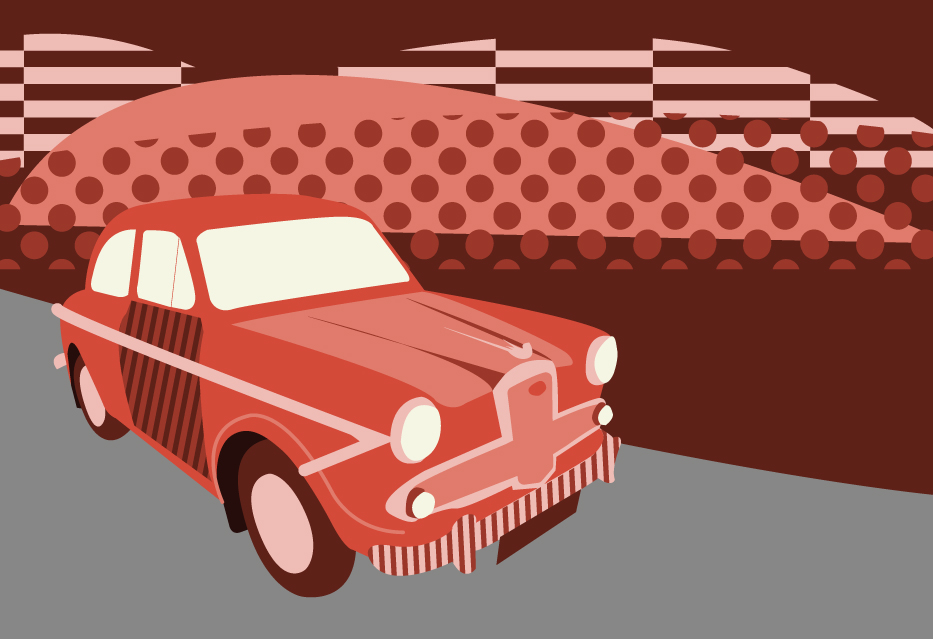From sedate supermini to pocket rocket, the Renault 5 was loved by everyone from shoppers and commuters to boy racers throughout its 24-year life.
Now, as good examples become scarce, prices are on the rise and the cult classic looks as funky as it ever did.
We take a look at the car known simply as Le Car in the US to suit an audience that had little history with numbered Renaults.
When I think of the Renault 5, two memories come to mind: watching in childhood wonder on holiday in France as crazy Frenchmen (it was always men) stormed down the outside lane of autoroutes with their foot on the floorboards; and watching in equal wonder as a young man as a GT Turbo seemed to take off as it sprinted away from me off a roundabout in the late 80s.
The car left a lasting impression, and a rare sighting of one on the roads today immediately takes me back to the days when they were more commonplace – this cheerful little hatchback that pre-dates the VW Golf by two years.

Launched in 1972, the story behind the car’s design – which lasted those 24 years in production with just one modernising update – is unusual, and tragic.
Renault stylist Michel Boué was merely doodling for his own amusement when his drawings were seen by his superiors and turned into a fully-fledged design in 1971.
Sadly, he was struck by a virulent form of cancer and died later that year before he could see what a success his brainchild would become, with nearly 5.5million cars rolling off the production lines until it was finally usurped by the Clio in 1996.
The 5 borrowed engines from the Renault 4 and 8 – either 782cc or 956cc – but the body was a departure, featuring a monocoque construction, common in Europe at the time but a change for Renault.
The chunky body featured a sharply sloping rear end, a cute nose and, rare in the industry at the time, fairly large plastic bumpers covering a wider potential area of contact than contemporary conventional bumpers. In France, where touch parking was common, this gave the car a reputation as an ideal city vehicle.
Engine size options increased over the years for the mark 1, growing through 1108cc to 1289cc and finally 1397cc.
At launch, the 5TL with the 956cc engine matched the quickest vehicle in its class – the Datsun Cherry – with an 86mph top speed, faster than the equivalent Mini, Hillman Imp and Fiat 127, but it wasn’t especially quick through the gears, resulting in a pedestrian 0-60mph time of 20.6 seconds.

Autocar described the engine as “not terribly willing” and warned that this was “no boy racer”.
But, with plenty of space inside, decent fuel economy and comfortable seats, the 5 was an instant hit in its home market, and narrowly missed out on being named European Car of the Year to the Audi 80.
In 1976, Renault was about to change the game for small hatchbacks, introducing one of the first hot hatches to the market with the 5 Gordini (Alpine in its home market), featuring the 1397cc engine mated to a five-speed gearbox, new cylinder head and combustion chambers.

The little car was transformed from a city runabout to performance hatch, with output doubled to 92bhp propelling the car to 104mph and a 0-60 time of 9.7 seconds – and all two years before the introduction of the Golf GTi.
The next performance boost came in the form of a turbocharger introduced in 1982, pushing output to 110bhp, top speed to 111mph and cutting the 0-60 time to just 8.7 seconds – all helped by the car’s super-light weight.
This Gordini turbo should not be confused with the Renault 5 Turbo, launched in 1980 primarily as a rally car in response to Lancia’s success with the mid-engined Stratos, but also selling more than 3,000 street versions with distinctive front spoilers and bulging rear end.

The engine, which produced 158bhp in standard form, was placed behind the driver in the passenger compartment, and drive was switched from front to rear. At the time, it was the fastest French production car with a top speed of 120mph and 0-60 in 6.6 seconds, and in its first outing in the World Rally Championship it won the Monte Carlo Rally in 1981 with Jean Ragnotti at the wheel.
With so few made, these cars are now highly collectible and can fetch prices of up to £30,000 in mint condition.
Essentially unchanged since its introduction 12 years earlier, the 5 underwent its only proper redesign in 1984, with more interior space, and a wider and longer platform.

Like our illustration of the Renault 5 at the beginning of the article?
Download a free high-quality poster version here.
And although the body and chassis were completely new, the car was merely a modernisation on the original design rather than a complete change. The silhouette remained essentially the same, but a lower drag coefficient allowed fuel consumption to increase to an impressive 57mpg at 56mph.
The new car was offered with a number of different engines, with the most powerful being the 1700cc unit from the Renault 9 and 11, producing 94bhp.
A year after the restyle, the fabled GT Turbo was introduced, utilising a modified version of the 1397cc engine. Weighing just 850kg, the 113bhp car had a phenomenal power-to-weight ratio, reaching 60mph in just 7.5 seconds.

To put that into context, the Fiat Uno Turbo and Peugeot 205 GTi took 8.1 and 8.7 seconds respectively, and the GT Turbo also bested them in flat out speed, hitting 125mph compared with 120 and 118 for its rivals.
Car magazine praised an “exhilarating drive”, and in 1987 a few tweaks to the engine upped the output to 120bhp, keeping it nicely ahead of its direct Gallic competitor, the similarly upgraded 205 GTi.
Unlike modern turbos with their engine management systems controlling a smooth flow of power, the GT Turbo always suffered from “turbo lag”, which may seem annoying to those used to newer cars, but it makes for an exciting build up to that “boom” moment when the turbo kicks in and propels this pocket, lightweight rocket past most normal vehicles in its sights – which explains that burst away from the roundabout I remember so vividly.
Adrian Flux Classic Car Insurance
The GT Turbo was discontinued in 1991, when the Clio 16v and Williams took up Renault’s hot hatch mantle.
As for the standard 5, it was effectively replaced by the Clio in 1990, but carried on in production in Slovenia until 1996 as a cheap alternative to the new car, with the 5 Campus of this era selling well in the UK.
Like many older French cars, the 5 had bags of character and would make a head-turning retro runabout or lusty speedster today, depending on your tastes.
And although there aren’t too many early cars on UK roads these days, you can always pop over to France and grab a left hand drive version from a far more plentiful supply.
Insurance from Adrian Flux
Get competitive classic car insurance for all types of Renault 5 with Adrian Flux.
Features can include:
- Agreed value
- Limited mileage discounts
- Owners club discount
- Laid up cover
- Wedding hire cover






